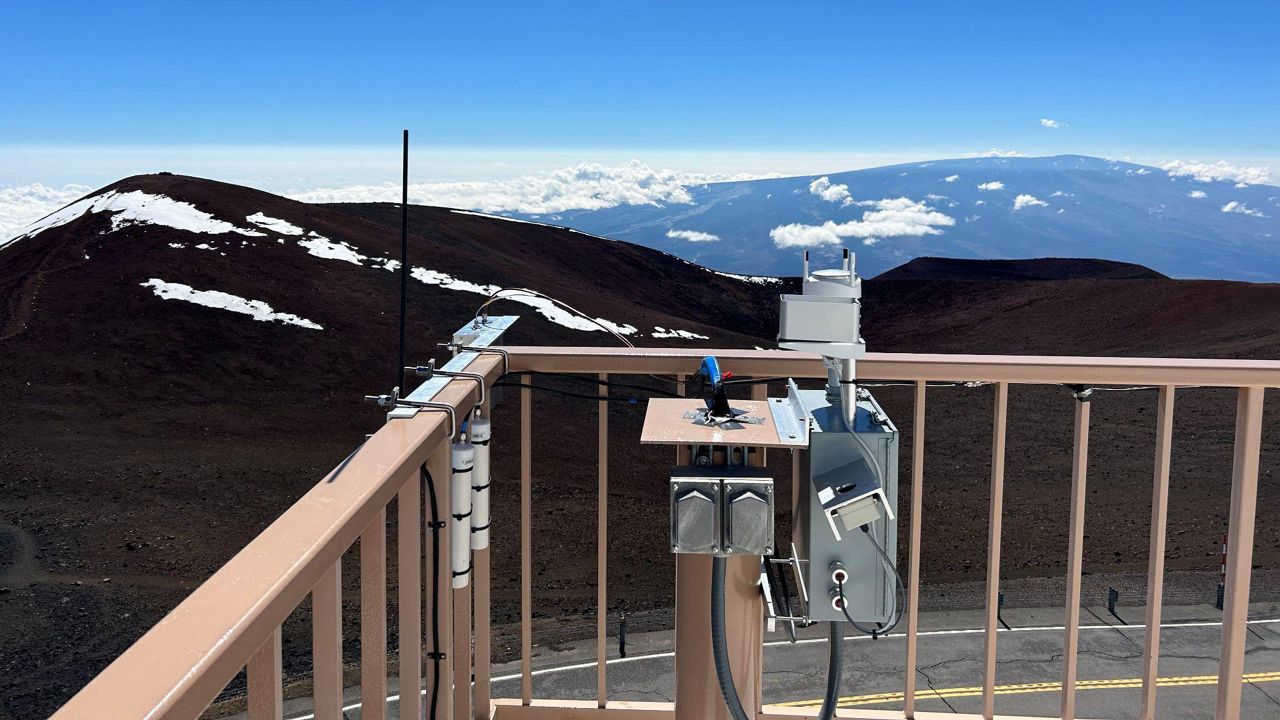The National Oceanic and Atmospheric Administration is working with the University of Hawaii to collect atmospheric data on Mauna Kea after the Mauna Loa Observatory was abruptly disabled on Nov. 28, 2022, when lava crossed over its power lines and cut off access for staff, according to a release.
The Mauna Loa Observatory is one of four NOAA laboratories that measures the Keeling Curve, a graph that shows the accumulation of carbon dioxide in the Earth’s atmosphere, which has been crucial evidence for climate change. Measurements had been taken at the observatory since 1958.
After the lava from the Mauna Loa eruption crossed over the Mauna Loa Observatory Road on Nov. 28, the Mauna Loa Observatory lost power. After that, there may have been three other times that the lava flow crossed the road, according to Adam Weintraub, the communication director for HI-EMA, who emailed with Spectrum News Hawaii for a story about lava damage.
In December, NOAA scientists installed an intake tube less than an inch in diameter and 25-feet long on the UH 88-inch telescope located on Mauna Kea. The intake tube takes samples of the summit air, filling the void left when the Mauna Loa Observatory was cut off.
“The data gathered over many decades in Hawaii are essential to our understanding of climate change,” said Steve Thur, NOAA assistant administrator for Oceanic and Atmospheric Research, in the release. “We are always grateful for the strong partnership with the University of Hawaii, but especially now when we need a way to ensure continuity in the measurement of CO2. Being able to pull atmospheric samples from Maunakea while MLO is down ensures that any disruption to this important long-term research will be minimal.”
NOAA is now able to measure nearly 60 gases, including carbon dioxide and methane, which are the most important greenhouse gas measurements.
The federal agency plans to continue to collect samples for at least a year.
“As conditions related to climate change worsen around the globe, it was critical for UH to step in to assist NOAA as scientists scrambled to get atmospheric data collection back up and running,” said Doug Simons, director at the UH Institute for Astronomy. “Maunakea plays an important role in research that extends beyond astronomy.”
Michelle Broder Van Dyke covers the Hawaiian Islands for Spectrum News Hawaii. Email her ideas and feedback at michelle.brodervandyke@charter.com.





